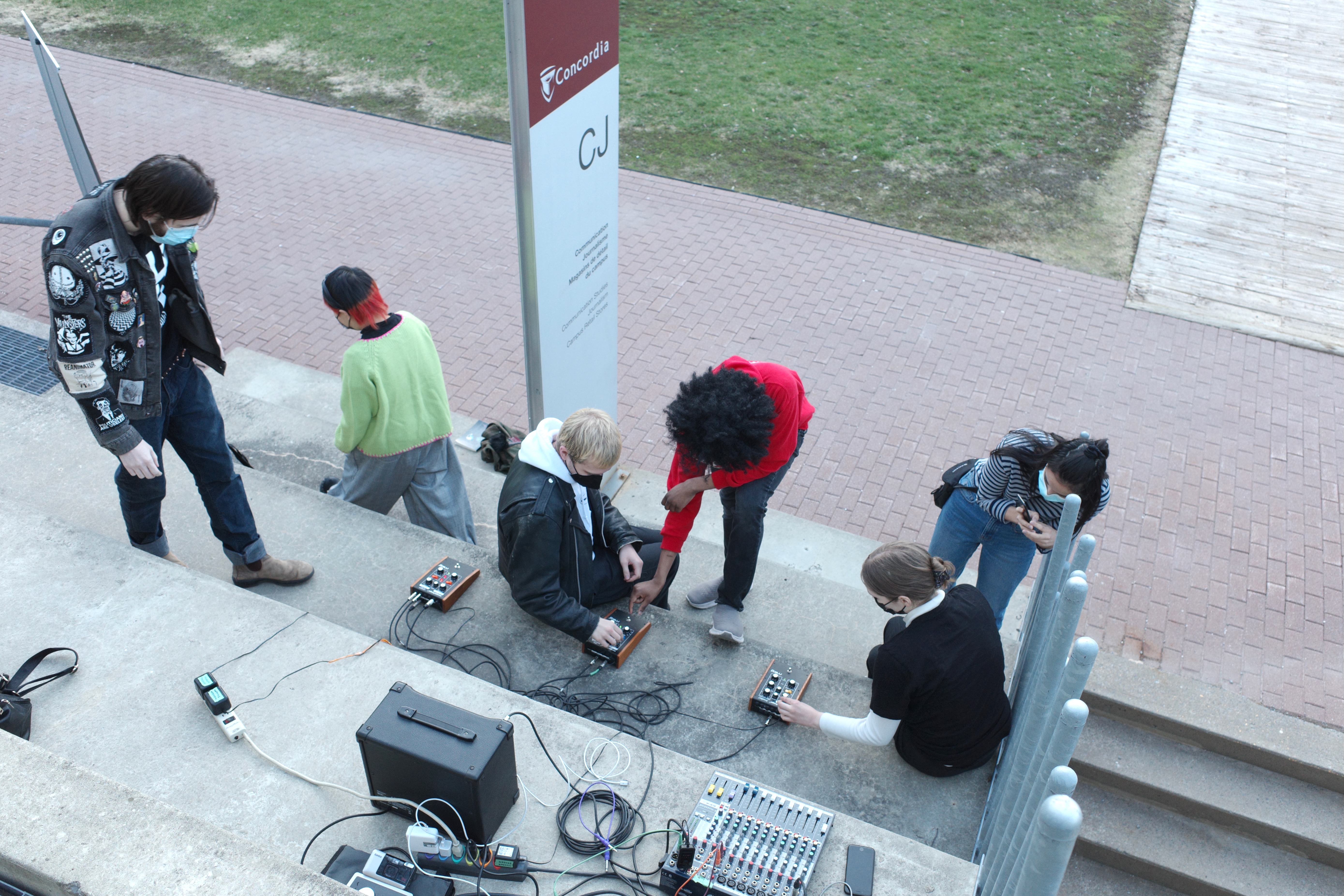CJLO Drone (Music) Making w/ Angus Tarnawsky
Loyola Quad, 6–7pm, April 30, 2022

Participants: Chris, Dan, Calvin, Reuel, Elisabeth, Francella
︎︎︎
Part 1: What is a drone?
Speaking on sonic terms (rather than talking about the small remote controlled objects we often hear flying through the air), the OED defines a drone as “a continuous low noise.” However, I prefer to think of a drone as a long sustained tone, regardless of whether it is low (in terms of musical pitch) or a noise, per-se. For me, these tones are not something that I would call noise. Drone music, in its many varied guises, is defined by its use of long sustained tones. In most of its genres, the sounds that develop over time are dynamic rather than static; they shift and change timbrally, all the while interacting with accompanying musical elements. Perhaps, a piece features many different drones, all happening at the same time, or arriving at different moments in a piece. To get a sense of what I mean, here’s a great place to start:
Much love to Brian Chase! What are some other musical examples that come to mind?
︎︎︎
Part 2: Let’s drone!
We will get started using our voices. These instructions by Pauline Oliveros will guide our vocalizations.
︎︎︎
Begin by taking a deep breath and letting it all the way out with air sound.
Listen with your mind’s ear for a tone.
On the next breath using any vowel sound, sing the tone you have silently perceived on one comfortable breath.
Listen to the whole field of sound the group is making.
Select a voice distant from you and tune as exactly as possible to the tone you are hearing from that voice.
Listen again to the whole field of sound the group is making.
Contribute by singing a new tone that no one else is singing.
Continue by listening then singing a tone of your own or tuning to the tone of another voice alternately.
︎︎︎
Part 3: Electronic signals
Next, we will try improvising with long sustained tones, using some basic building blocks of analog synthesis:
A: Oscillators
B: Low Frequency Oscillators
C: Filters
For the workshop, we will use three Moogerfooger effects pedals by Moog. One will function as an oscillator (the MF-107 Freqbox), another as a LFO (the MF-102 Ring Modulator), and finally, one will serve as a filter (the MF-101 Lowpass Filter).
In the future, check out Playground. This will allow you to explore the same workshop concepts using your computer, or even your phone.
Note: Oscillators are SOMETIMES called VCOs (voltage controlled oscillators), Low Frequency Oscillators are OFTEN called LFOs, and Filters are SOMETIMES called VCFs (voltage controlled filters). In all cases, “voltage control” refers to the way that analog synthesizers are controlled with electrical signals (aka, voltages).